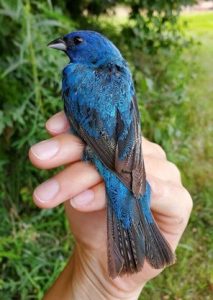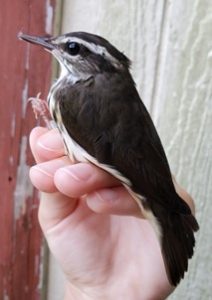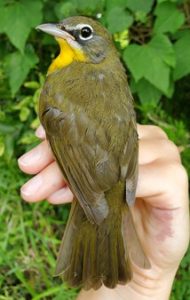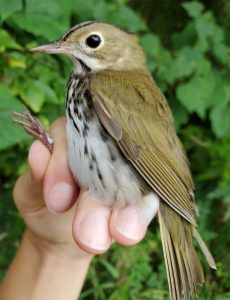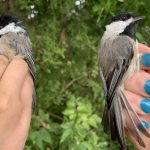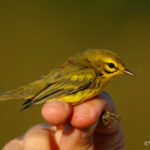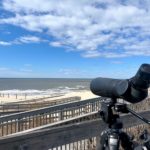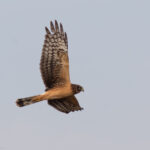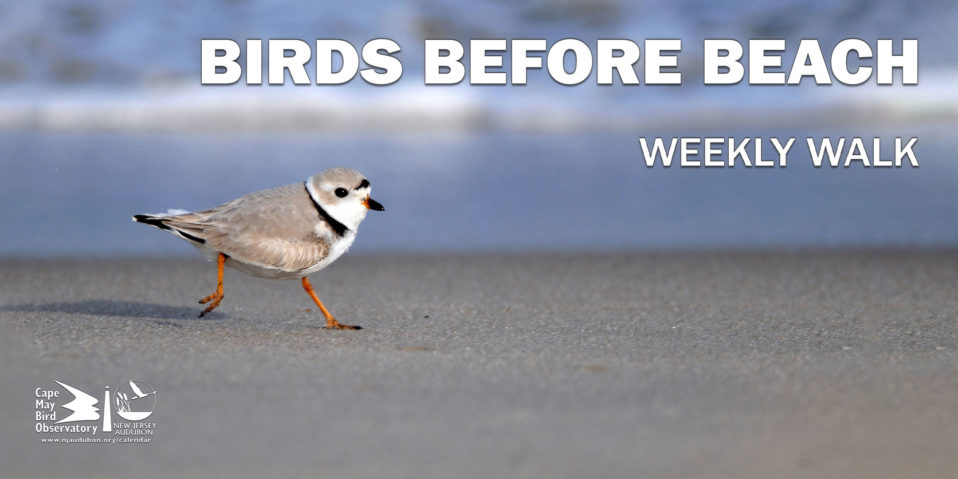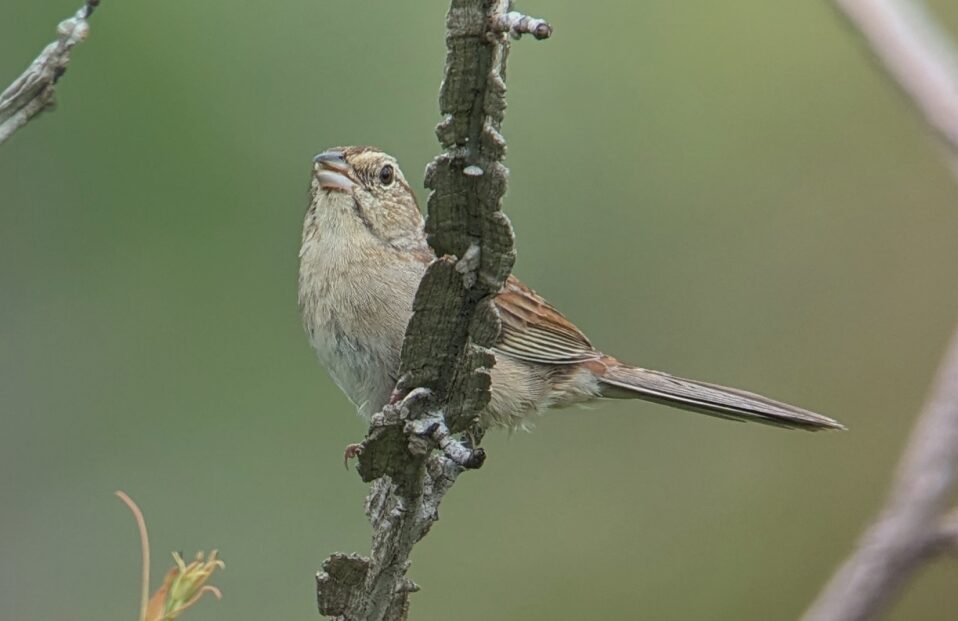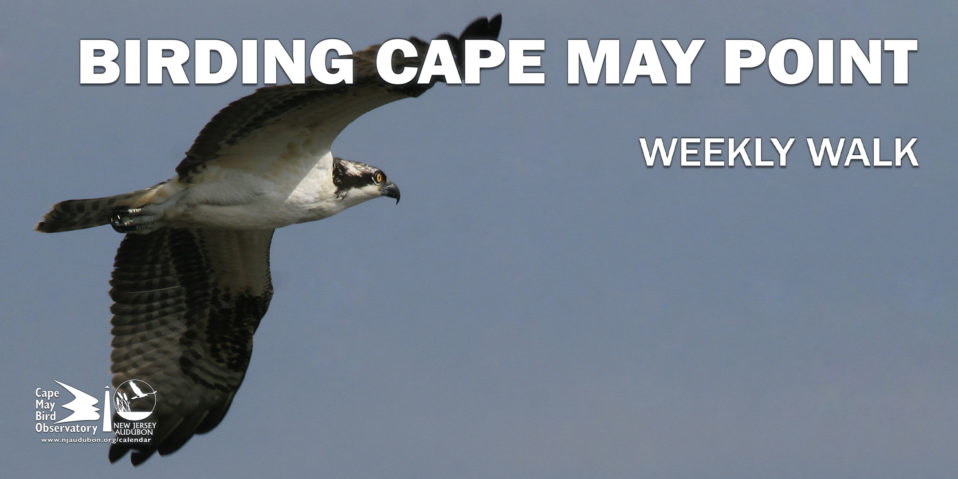The Cape May Songbird Stopover Project banding station is up and running for the fall 2021 migration season! Over the past week our banding team, Lauren diBiccari, Aaron Yappert, Chelsea Beck, David Mizrahi and Lena Usyk, have worked to clear net lanes, set up nets, and get the banding station organized for what we hope is another great season. This will be the fourth year of fall banding here in Cape May. While the Cape is known as a bird migration hotspot, we know very little about how those migrating birds, especially the secretive skulkers, use the different habitats around the peninsula and how long they stay during their stopovers.
Our nets are placed in such a way to capture birds using a variety of habitats ranging from wetland transition zones to dry upland meadows. This will allow us to begin to understand which species prefer which habitats and how long they remain in Cape May before departing on their southward journeys. This information will help land managers and conservation biologists preserve high-quality bird habitat, not only around Cape May, but elsewhere along the Atlantic coast as well. We’ll be posting updates and sharing the highlights each week throughout the season and we hope you can follow along!
The first week of banding has been a mix of hot temps and rainy days – two things that often mean nets get closed early or not opened at all. The welfare of the birds is our top priority so we only operate the station when weather conditions permit and will open and close nets as conditions change throughout the day. In terms of capture numbers, we’ve had a fairly slow but steady 20 – 40 birds a day which has allowed our crew to ease into the rhythm of the station, get familiar with the data being collected, and enjoy the finer nuances of the birds. It won’t be long before migration really gets going and things get busy! This week’s highlights were Louisiana Waterthrush, a first for the project, and two Worm-eating Warblers. American Redstart, Ruby-throated Hummingbird and Northern Waterthrush topped the list of migrants caught at the station.
| Species | # | Species | # |
| Northern Waterthrush | 36 | Least Flycatcher | 2 |
| Ruby-throated Hummingbird | 30 | Ovenbird | 2 |
| American Redstart | 19 | White-eyed Vireo | 2 |
| Traill’s Flycatcher | 16 | Worm-eating Warbler | 2 |
| Carolina Wren | 14 | American Goldfinch | 1 |
| Common Yellowthroat | 11 | Blue-gray Gnatcatcher | 1 |
| Northern Cardinal | 11 | Blackburnian Warbler | 1 |
| Gray Catbird | 10 | Canada Warbler | 1 |
| Prairie Warbler | 10 | Cedar Waxwing | 1 |
| Yellow Warbler | 8 | Great Crested Flycatcher | 1 |
| Black-and-white Warbler | 3 | House Wren | 1 |
| Carolina Chickadee | 3 | Louisiana Waterthrush | 1 |
| Downy Woodpecker | 2 | Tufted Titmouse | 1 |
| Indigo Bunting | 2 | Yellow-breasted Chat | 1 |








